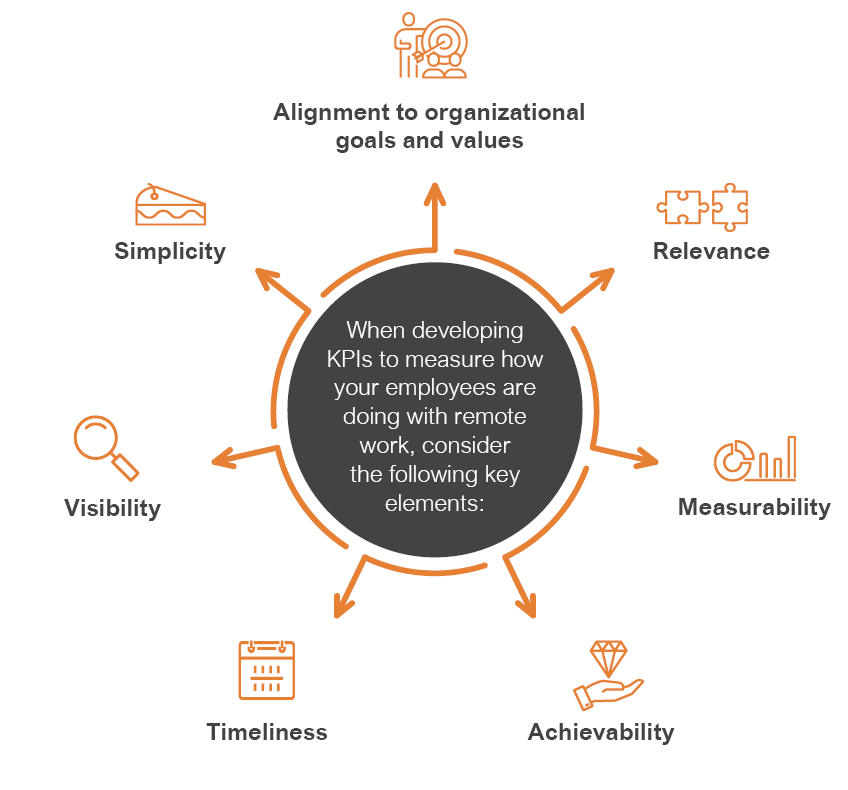Introduction
Remote Work is Trending
Pros of Working from Home
Cons of Working from Home
How to Overcome the Cons of Working from Home
Tips for Success
Next Steps

Introduction
These days, it can feel like everything is just one giant mess. With COVID-19 altering the way we do just about everything, our work lives have changed dramatically over the past four months. But work doesn’t have to feel messy. Many of us have started to adapt to a new work style. Still, there are plenty of kinks to work out. Many organizations still struggle to discover which practices related to managing remote employees work most effectively for their teams. This article explores the most recent trends in at-home work and how to overcome the inherent challenges that come along with it.
Remote Work is Trending
We can no longer deny it. Remote work has been trendy for the past couple of years. Now, with COVID-19 turning everything on its head, we’re all having to accept that work-from-home policies are here to stay for many industries. In fact, Nicholas Bloom, Professor of Economics at Stanford University, has said in his TedxTalk that working from home should be considered “future-looking technology” from a business standpoint.
Still not quite convinced? Consider the numbers. Remote work has been trending and researchers are noticing. According to the Remote Work Report, 42 percent of people who are 100 percent remote say they have been working this way for over five years.
Additionally, 41 percent of global businesses surveyed say they are currently offering some amount of remote working, while 60 percent provide flexible working opportunities. Upwork, an online platform for freelance workers, predicts that 73 percent of all work teams will have remote employees by the year 2028.
As the novel coronavirus/COVID-19 illness has gripped the United States for much of 2020, it looks like some of the changes to the way we work will be sticking around for quite some time. According to research conducted in March 2020, 88 percent of organizations encourage employees to work from home, regardless of whether they show any symptoms. By all intents and purposes, COVID-19 has provided a tipping point for how Americans work.

Pros of Working from Home
Working from home certainly has its share of benefits. Here are some of the many ways that remote work can increase productivity and lead to enhanced work output.
- People are more likely to work their full shifts each day – Without the tricky commutes, long lunches with colleagues, leaving early for childcare/home maintenance work, etc., people are much more likely to be at their desks doing their jobs for a full eight hours a day.
- People concentrate better at home – The office is full of distractions. People can focus on their tasks better when their home environment is peaceful/comfortable.
- Employees stay longer with companies that allow for remote work – Companies can spend less time and money on recruiting and hiring when their employees have higher tenure.
- Employees are less likely to take time off – The work-life balance is easier to strike while working from home.
Cons of Working from Home
While there are definitely many pros to remote work, there are some cons, too. It’s important to be aware of both sides of the coin so that your organization can create a good work-from-home policy.
Here are some of the common work-from-home cons:
- Loneliness can become a challenge for some remote employees – This can affect mental health and lead to poor communication between employees and management.
- Some employees find it difficult to unplug from work at the end of the day – For these individuals, they can see work-life balance go out the window.
- Many remote employees report not receiving adequate internet security training to keep their company’s data safe at home.
- Lack of culture – When employers don’t make efforts to emphasize company culture to remote employees, these individuals can feel disconnected from the overall message or brand related to their jobs.
- Maintaining accountability can be a challenge – Adapting KPIs and metrics to the remote lifestyle is crucial.
How to Overcome the Cons of Working from Home
Although there are several cons to having employees work from home, there are ways to overcome this. The best thing management and leadership teams can do to work around any potential pitfalls is to prepare and implement a successful work-from-home plan. The plan should be clear and adaptable.
A successful work-from-home strategy will have the following features:
- Define how employees will work – Some roles are unable to seamlessly transition to remote work. Laying out an idea of what a workday should look like for these employees will be immensely beneficial to maintaining productivity.
- Provide the right tools and technology – Leadership should ensure that all employees have what they need to do their job from home. This includes any technology such as laptops, printers, or even wireless routers.
- Establish communication channels that work for everyone – Using chat features, planning programs, etc. can help ensure that everyone stays on the same page and has access to critical information in real time.
- Plan group time – Collaborative aspects of certain jobs can easily suffer while employees are remote. Schedule in regular group discussions via Zoom or Skype to keep the ideas flowing.
- Clearly establish rules and legal rights for employees – Make sure that employees take their regular breaks and know what is expected of them during their workdays. If necessary, provide guidelines about when employees may and may not work on company projects. When employees have a better work-life balance and can maintain good mental health, they’ll do better work and feel like more valued members of the team.
Tips for Success
In order to be successful with your remote work teams, find ways to measure the effectiveness of your work-from-home policy.
When developing KPIs to measure how your employees are doing with remote work, consider the following key elements:
- Simplicity
- Alignment to organizational goals and values
- Relevance
- Measurability
- Achievability
- Timeliness
- Visibility

Be sure to clearly identify the value and purpose of any new KPIs to remote employees so that they have a clear picture of what is expected of them. Some common performance metrics to consider including may involve call volume, sales, revenue, time spent available/engaged with clients and customers, etc.
Overall, regardless of your field or industry, there are several tips to consider that will help you develop a functional and productive work from home protocol for your organization during this time.
- Align expectations for employees with company goals, values and culture.
- Communicate often with ALL team members. Ensure that management has effective contact strategies for each of their teams.
- Recognize that change can be challenging; employees may now be balancing multiple responsibilities.
- Build trust between management and employees.
- Emphasize the importance of self-care for employees during these times and support them as needed.
- Check in with employees individually as much as possible to measure morale and productivity. Being honest and direct with employees can help foster a growth mindset type of environment.
Next Steps
Here at KnowledgeCity, we are committed to helping guide organizations and teams to success. This includes navigating employers and employees to greater levels of success and achievement, even during challenging times. Our view is that we’re all in this together and that we cannot succeed if you are not succeeding.
Our course, “Managing Remote Employees,” explores ways in which you can continue to get to know your team better, even with the inherent distance between management and employees. The course explores tips to manage time and communication effectively and provides guidelines for evaluating remote performance and tips to avoid common work-from-home pitfalls. We also have an excellent course, “Coping with Change,” which can help you adopt a holistic mindset when taking your team remote for the first time.
If you’re one of the many American workers who is currently furloughed/laid off due to the coronavirus, or if you know someone who is, we also have completely free courses that we have made available to those who wish to use this time off to boost their professional skills.

Subscribe to Our Newsletter
Join 80,000+ Fellow HR Professionals. Get expert recruiting and training tips straight
to your inbox, and become a better HR manager.

 KnowledgeCity
KnowledgeCity 













